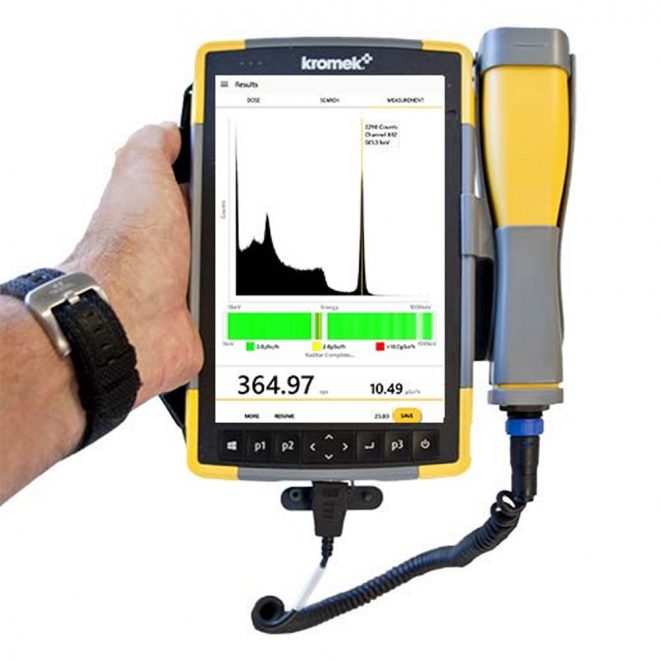-
Berkeley Nucleonics SAM 950 Ruggedized Isotope Identifier
Berkeley Nucleonics SAM 950 Ruggedized Isotope Identifier is a RIID detector designed to meet the requirements of ANSI 42.34 criteria for hand-held instruments for the detection and identification of radionuclides. This Isotope Identifier is mostly used in Forensics, Survey Meter, Spectral Analysis, Secondary Screening, Isotope Confirmation, Dose Rate Meter, Data Logging, Source Locator, and also as an Iridium detector.
Application: Secondary Radiation Screening, Medical / Industrial Nuclear Controls, Event Management, Health Physics / Hazmat Support, Port and Border Law Enforcement -
Kromek RayMon10 CZT Handheld Gamma and Isotope identifier
Kromek RayMon10 CZT Handheld Gamma and Isotope identifier is the world’s most powerful CZT handheld radiation monitor used to measure, detect, and analyze radionuclide emitting gamma rays. RayMon10 ® is robust, lightweight, and easy to use; its portability and usability are second to none. The CZT detector provides high-resolution gamma-ray spectra for simple and unequivocal detection.
Applications: First responders, Nuclear installation monitoring, Nuclear accident response, Security screening undertaken by customs, police, fire and rescue services, Military, Site surveys. Civil Defense, Health Physics
Translate


